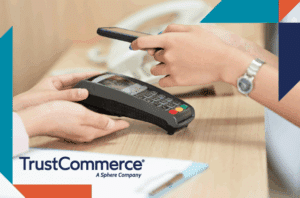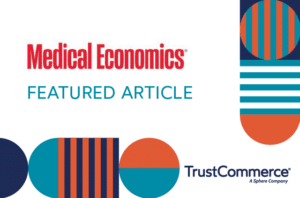Healthcare payments are undergoing a transformation, as patients are increasingly seeking payment experiences that mirror their everyday retail lives. A new data-driven study released by leading healthcare gateway and merchant processing provider, TrustCommerce, reveals how rising healthcare costs, healthcare consumerism, and evolving consumer preferences are reshaping the way healthcare providers approach billing and payments.
The 2024 Healthcare Payment Trends and Future Outlook Report, which analyzed data from multiple sources including TrustCommerce transaction data and a survey conducted by Morning Consult on behalf of Mastercard of 1,000 patients and 450 healthcare organizations, uncovers several crucial consumer trends in healthcare payments, how they are affecting a patient’s financial experience, and insight on the challenges facing the medical industry.
Acceleration of Digital Payment Adoption
Ninety-six percent of all healthcare organizations now accept credit card payments from patients, reflecting the industry’s shift toward digital payment adoption. While patients show a slight preference for debit cards (59% prefer debit vs. 39% preferring credit), actual patient payment data reveals that credit cards account for 47% of receivables, suggesting patients often choose credit cards for larger medical expenses.
Flexible Healthcare Payment Options Are Now Essential
As healthcare costs continue to rise, providers are responding with more flexible patient payment solutions. The 2024 healthcare trends report found that 69% of organizations now offer payment plans to help ease patients’ financial burdens. Adapting to patient payment preferences is crucial, as more than half of patients are now requesting these kinds of flexible payment options.
Online Bill Pay Gains Momentum
Patient portals and digital billing are becoming the norm, with 94% of healthcare organizations that have offered online bill pay for over five years reporting increased patient adoption. The study shows that 71% of organizations use patient portals as their primary billing channel, followed by email (67%) and text messaging (60%).
Healthcare Data Security is Top of Mind
While healthcare organizations are embracing digital innovation, they’re also prioritizing cybersecurity. Healthcare data security is crucial to safeguard sensitive patient information from harmful breaches. Research from the healthcare trends and future outlook report indicates that providers are focusing on protecting patient data through secure payment storage and expanding their secure payment solutions to include options such as mobile wallets, like Apple Pay and Google Pay.
Challenges and Opportunities
The healthcare payment trends report highlights that while 80% of healthcare providers identify updating billing systems and expanding digital and self-service payment options as key priorities, implementation remains challenging. Upwards of 68% of healthcare providers are struggling with implementing flexible patient payment solutions and nearly 77% of organizations have reported difficulty in strengthening and improving their network security.
“Patients have come to expect the same experience when interacting with their healthcare provider that they get when purchasing goods and services in retail environments,” notes Johnathan Welch, Chief Product Officer at TrustCommerce. “This transformation in healthcare payments underscores a pivotal shift: healthcare organizations must embrace these innovations to improve financial access, boost patient satisfaction, and foster loyalty in a rapidly evolving, patient-centered landscape.”
Integrated Payment Solutions Equal Success
As the healthcare payment landscape continues to evolve, providers that offer streamlined, secure, and flexible patient payment solutions will be better positioned to meet the new patient expectations, while improving their collection rates. The trends reveal that the key to success lies in implementing integrated payment solutions that balance patient convenience with robust security measures.
Discover trends in healthcare payments & how they effect your patients’ financial experience. Download TrustCommerce’s 2024 Healthcare Payment Trends and Future Outlook Report.




